Varese is like New York, one hundred new pieces of art elevate the collection in Villa Panza
A memorable donation places the museum of contemporary art, an FAI property, second only to the Guggenheim Museum of New York in terms of the number of artwork kept in Giuseppe Panza di Biumo’s collection.
Villa Panza increased its already prestigious collection by adding 108 works by 26 European and American artists, previously part of the private collection of the Panzas. A memorable donation that places the museum of contemporary art of Varese, an FAI property ( Fondo Ambiente Italiano – Italian National Trust) since 1996, second only to The Guggenheim Museum of New York in terms of the number of artwork kept in Giuseppe Panza di Biumo’s collection.
(Thursday, November 10) This morning, Marco Magnifico, president of FAI, opened a crowded press conference emphasizing his family relationship with the collector, especially the rooted collaboration between the villa and the foundation that has lasted for twenty years:” We have always been committed to respecting the core identity of this House. This donation fills me with happiness because it is the sign of a trusting collaboration that has lasted for twenty years.”
The donation, by the children and in the name of Giuseppe’s wife, Rosa Giovanna Magnifico Panza, is yet another gift of the family, which has always been moved by real, enlightening and far-sighted intentions: “We continue building on the spirit that was at the heart of our parents’ collection, that is to allow visitors to enjoy these works. The Panza Collection is so rich that we felt it right to share it, in addition to the fact that it makes the Villa of Varese one of the most important places for this collection, alongside The Guggenheim Museum in New York. For us, it was a great joy, and this exhibition is beautiful, perhaps difficult, but you have to visit and surrender to it, embracing a free spirit.”, underlines Giuseppe’s daughter, Giuseppina Panza.
The exhibition “EX NATURA. New works from the collection of Giuseppe Panza di Biumo”, curated by Anna Bernardini and Marta Spavenello, was then presented by the critic and art historian Giovanni Agosti who emphasized the need to take some time to appreciate the works, chosen by the collector in that spirit and care, which are still the guiding principles of those who take care of the villa.
Indeed Villa Panza, as repeatedly stressed during the morning, is not a contemporary art museum but the House of the collector and his family. A place that still reflects and demonstrates the collector’s work, his sensitivity and culture, and a path of research that spans at least three generations of artists from the 50s to 2010. A place that looks to the future, so much so that today’s exhibition inaugurates a four-year program of exhibitions entitled to different themes that cover the entire collector’s collection and research: from “nature and shapes”, this year’s theme to “rhythm and dynamics”, “sign and message” and “light and colour” as pointed out by Anna Bernardini, the director of the villa.
A place that also has strategic importance for the area, as underlined by the mayor of Varese, Davide Galimberti: “This donation brings to FAI, this House, and the city of Varese an outstanding collection. This House is imbued with a deep spirit of cultural community that you can breathe every time you enter this place, and every time it is different. As a city, we will always support these initiatives and the growth and establishment of this place.”
ABOUT THE DONATION
The core 108 works donated to FAI belong to the second and third phases of Giuseppe Panza di Biumo’s research, as defined by the collector. The first phase or collection, begun in 1954, ranges from European informal art to abstract expressionism, with some digressions to pop art. It is now mostly displayed at MOCA in Los Angeles. The second phase or collection, created between 1968 and 1976, well represented at The Guggenheim Museum in New York and already displayed in small part at Villa Panza, focuses, instead, on minimal art, conceptual, environmental and light art; finally, the third phase, ongoing since 1986, and a founding part of the original donation to FAI, opens up to new perspectives with organic art, the art of small objects and colour.
The donated works allow for a better understanding of these last two phases of the collector’s research, not only through works by new artists but also through the integration of works by already displayed artists in Villa Panza’s permanent collection.
Represented in the donation are the American conceptual art of Robert Barry (1936), Jan Dibbets (1941), Joseph Kosuth (1945), Lawrence Weiner (1942-2021) and Sol Lewitt (1928-2007), and the minimal art of Jene Highstein (1942-2013) and Richard Nonas (1936-2021). There are also English artists such as Hamish Fulton (1946) and Richard Long (1945). Even works by artists belonging to the organic art group are included in the donation, as defined by Giuseppe Panza: Emil Lukas (1964), Ross Rudel (1960) and Peter Shelton (1951). The research on the colour of monochromatic painting by Anne Appleby (1954), Sonia Costantini (1956), Sean Shanahan (1960) and Phil Sims (1940). The collection includes works by David Goerk (1952) and Robert Tiemann (1936 – 2016) dedicated to small objects, Barry X Ball (1955) and Lawrence Carroll (1954-2019), and sound art projects by Michael Brewster (1946-2016). In the donation, there are also some works by artists such as Cioni Carpi (1923-2011), Giorgio Colombo (1945), Chiara Dynys (1958), Piero Fogliati (1930-2016) and Maurizio Mochetti (1940), emphasizing Panza’s interest in specific research of Italian art.
THE EXHIBIT
From November 10, 2022, to October 1, 2023, FAI (Italian National Trust) opens the exhibition “Ex Natura” to the public with new works from the collection of Giuseppe Panza di Biumo. The exhibition explores the relationship between two polarities, nature and shape, and how they develop from artist to artist and from work to work. This results in consonances and dissonances, interpretations and fascination, meanings and messages, some of which are early warnings to environmental protection if we consider nature an inspirational source and driving force of creation.
The exhibition includes 46 works by ten different artists. They are divided into ten single-subject sections and introduced by quotes from Giuseppe Panza taken from his autobiographical volume “Ricordi di un collezionista” (Memories of a collector). For this occasion, FAI has created a guide accessible via smartphone with a profile for each artist. You will listen to a podcast telling excerpts from the book mentioned above, with interesting anecdotes and deep thoughts. This is probably the best “background music” for your tour, to understand not only the art on display but also the choices of Giuseppe Panza di Biumo. About the works displayed: 30 were donated, and 16 of are a loan from the Panza Collection Mendrisio, which is still held and managed by the Panza family.
The tour develops from the first floor of the House, where you can admire Lawrence Carroll’s “poor forms”, of which Giuseppe Panza highlights “the hidden and not obvious beauty […] that has roots and is part of our being.” Close to them, you can see works in organic materials from the natural world, like Christiane Löhr’s sculptures. They represent timeless shapes of dainty flower stalks and impalpable heaps of seeds. Emil Lukas also stages the natural world in geometric panels.
The tour is enriched with works investigating the organicity of forms and abstract objects with a clear relation to the physical world. From Ross Rudel’s “vital forms” to Peter Shelton’s “organic forms”, which refer to the human body. A “machine” by Piero Fogliati also relates to the shapes of nature, but with a focus on sounds. Then we have the works by David Goerk, who creates abstract shapes that have no apparent relation to other things. Yet, they were generated from ordinary objects and natural and astral symbols.
The exhibition continues on the ground floor, in the two former stables, where nature triumphs in its relationship with humankind. On the walls of Scuderia Grande (the big stable), there are two gigantic works by Hamish Fulton that illustrate the love for nature, the driving force of artistic creation. His experience of walking in direct, physical contact with the forms of the landscape results in evocative conceptual forms, words and signs. The same space features Richard Long’s Cross of Sticks artwork, 1983. The artist starts from the very action of walking, rendering the experience in a geometric form made of materials collected from nature. The tour ends in Scuderia Piccola (the little stable) with eight works by Gregory Mahoney (1955), which investigate the relationship among humankind, nature and the universe. According to the artist, the discarded element, used and reworked, is a trace of the cosmic time that corrodes matter and of nature, more powerful than humankind and eternal, that takes it back.
This exploration of nature and shapes allows for a reinterpretation of some artwork displayed permanently in Villa Panza, which the collector himself places in the research of organic art. This includes Allan Graham (1943-2019), Robert Tiemann (1936-2016), Martin Puryear (1941) and Meg Webster (1944). At the exhibition, curated by Anna Bernardini and Marta Spanevello, you will find Catalogo Magonza Editore (Magonza Editore catalogue) with texts by Anna Bernardini, Emanuele Cocci and notes by Sara Fontana and Marta Spanevello.
EX NATURA. NEW WORKS FROM GIUSEPPE PANZA DI BIUMO’S COLLECTION – from November 10, 2022, to October 1 2023
Villa and Panza Collection – Piazza Litta 1, Varese
Opening hours: from Tuesday to Sunday – from 10am to 6pm (the ticket office closes at 5.15pm.) Admissions: full ticket: €15.00; FAI member: €6.00; student (19-25 years old): €10.00; reduced ticket (children 6-18 years old): €7.00; special price for families (2 adults + 2 children): €35.00; Free admission under 5 years old. For reservations: www.villapanza.it; For further information about FAI: www.fondoambiente.it; telephone: 0332 283960; e-mail: faibiumo@fondoambiente.it
Translated by Molinari Enea and Franzè Ludovica
Reviewed by Martina Montemurro
La community di VareseNews
Loro ne fanno già parte
Ultimi commenti
Stefano Montani su Contro l’indifferenza e la violenza: la musica scuote Varese in un grido per la Palestina
Felice su Sanpietrini staccati e resti di gavettoni: allarme maleducazione al Parco Mantegazza di Varese
Mastro SIM su Patentino obbligatorio per alcuni cani: la Lombardia vara la “save list”, ecco le razze coinvolte
Gloria Cerri su Patentino obbligatorio per alcuni cani: la Lombardia vara la “save list”, ecco le razze coinvolte
CarloP su Sanpietrini staccati e resti di gavettoni: allarme maleducazione al Parco Mantegazza di Varese
GrandeFratello su Sanpietrini staccati e resti di gavettoni: allarme maleducazione al Parco Mantegazza di Varese

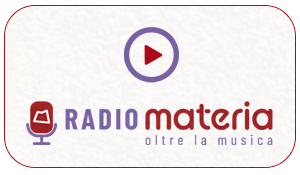


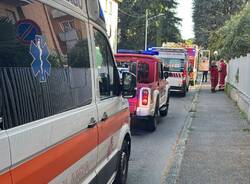
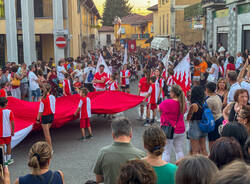
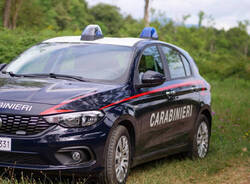

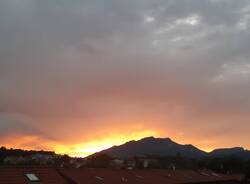
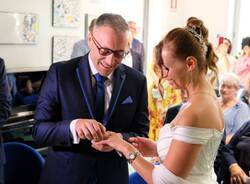


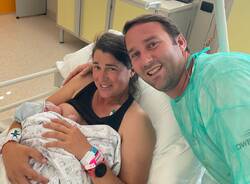

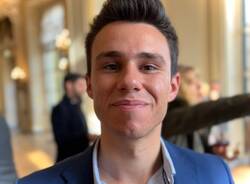

Accedi o registrati per commentare questo articolo.
L'email è richiesta ma non verrà mostrata ai visitatori. Il contenuto di questo commento esprime il pensiero dell'autore e non rappresenta la linea editoriale di VareseNews.it, che rimane autonoma e indipendente. I messaggi inclusi nei commenti non sono testi giornalistici, ma post inviati dai singoli lettori che possono essere automaticamente pubblicati senza filtro preventivo. I commenti che includano uno o più link a siti esterni verranno rimossi in automatico dal sistema.